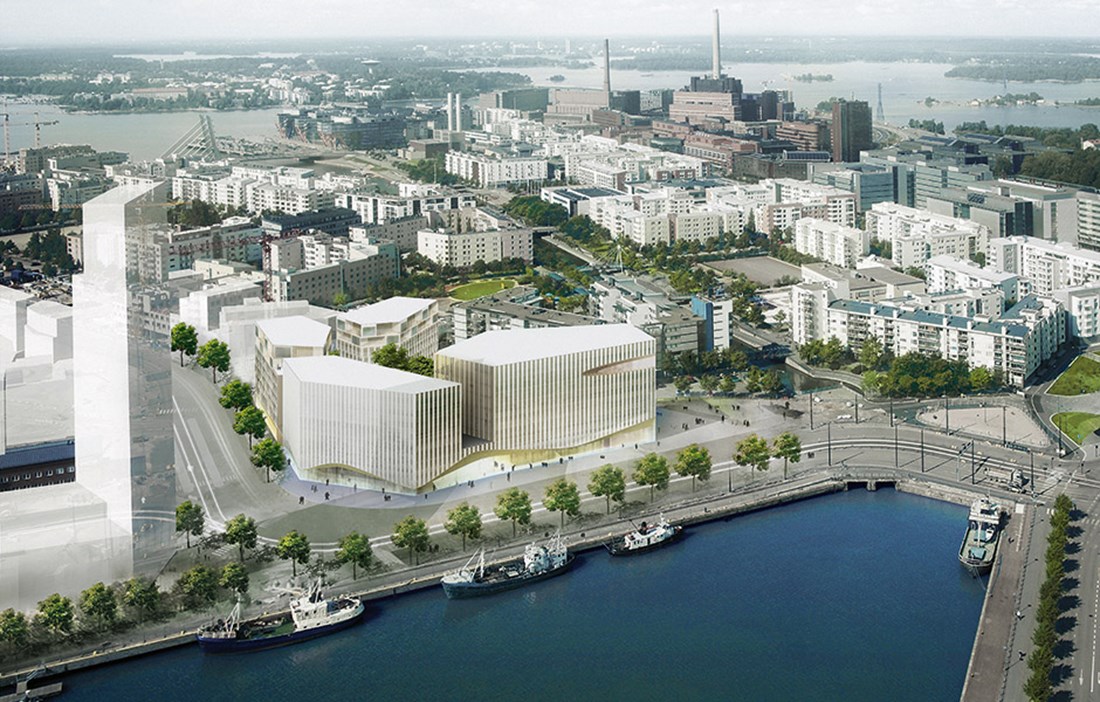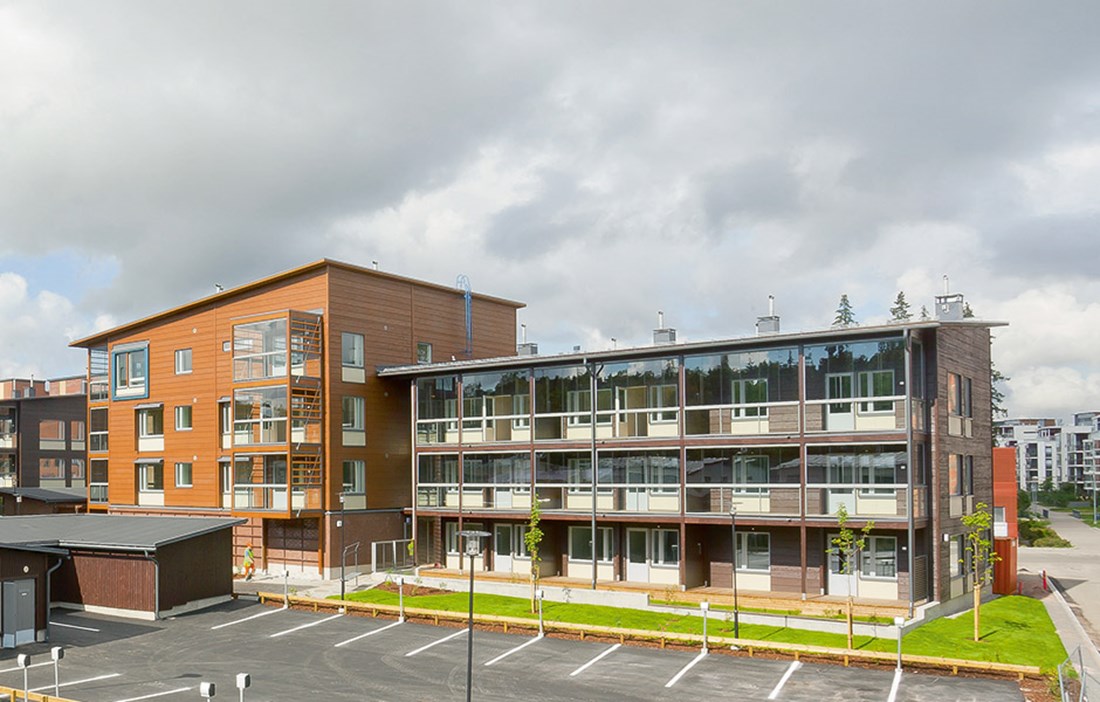TWO RUN-DOWN PORT areas in central Helsinki are in the process of giving way to offices and waterfront residences. They are part of the city’s strategy for denser and taller developments to avoid building on greenfield sites.
However, the focus of the long-term urban planning is also on promoting alternatives to concrete.
“With wood as a construction material, the whole life cycle becomes more ecological,” says Ina Liljeström.
As project engineer for the City of Helsinki, she keeps a keen eye on the many wooden high-rise designs that are being built or at the planning stage. And new development is needed – rapid population growth is predicted to bring an increase from today’s 650,000 to around 700,000 citizens by 2025.
At Jätkäsaari, one of the two old ports, work is almost ready to begin on Wood City, a whole district in wood that is scheduled for completion in 2016. Wood City will include offices, housing, hotels and commercial properties with a total floorspace of 28,000 square metres.
LAST YEAR, THE GOVERNMENT amended the fire safety regulations. This allowed the City of Helsinki to raise the limit on high-rise wooden buildings from four to eight storeys, something that will make a mark in Jätkäsaari.
“We’re seeing a shift, with increasing interest in wooden buildings and collaborations between the public and private sectors to take the industry forward. In addition, the wood industry has to realign itself now that paper pulp offers such poor profitability,” says Ina Liljeström.
High-rise wooden buildings are planned for several areas across Greater Helsinki. Both in Honkasuo and Kuninkaantammi, 60,000 square metres of floorspace is being built for 1500 residents.
“The City owns the most land in Helsinki and is able to influence what is built. We really want to invest in ecological and energy-efficient building and all new projects must therefore meet the best possible energy standards.”
In November 2012, Helsinki hosted a major wood construction conference that included Canadian architect Michael green as a guest speaker. He was invited to talk about his plans to build five 20-storey buildings entirely in wood in Vancouver and to share his visions for wooden buildings.
“I live next door to a redwood tree that is almost 100 metres tall, so who says we can’t build just as high in wood?” he asked the audience.
Michael Green concludes that the bar can actually be set even higher for the number of storeys, and he has set his sights on 30.
“We have to get people to understand that wood is a strong, durable and safe construction material for building upwards. Once the Eiffel Tower went up, people’s attitudes to tall buildings changed – the key is to see things differently and change perspectives.”
Wood has seen quite an upswing across Finland and there was considerable interest in the conference. Wooden buildings are already been built or planned to provide a total of 7000 apartments, 2000 of them in Helsinki.
URBAN PLANNING IN HELSINKI received extra attention last year, when the city was declared World Design Capital 2012, a title awarded every two years by the International Council of Societies of Industrial Design (icsid), a non-profit organisation that promotes the interests of industrial design.
Several wooden buildings were put in the spotlight during the design year and an architectural competition for the city’s new central library was announced. Wood featured heavily in the six entries that qualified for the second round, and two of the entries had timber-clad facades. The winner will be announced in June 2013. Another result of the year as Design Capital is the cultural sauna, which was erected on the quayside on Hakaniemenranta. The wood-built sauna is open to everyone and harks back to the long Finnish tradition of public saunas.
In the district of Viikki in northern Helsinki, a block of high-rise wooden buildings has just been completed, providing a total of 103 rental apartments. The five buildings have concrete foundations and lift shafts, but the rest is all wood. A complete skeleton for the storeys and roofs was prefabricated in wood and delivered by the Finnish forest and wood industry firm Metsä Group.
Although Finland has huge timber resources, it has long been too expensive to build in wood compared with concrete. Now, however, the playing field is levelling out thanks to the development of prefabricated units.
“This method allows you to build up the floors and roof structure extremely quickly, just a week per building,” says Jari Viherkoski, architect at hmv Architects in Helsinki.
He secured the design job when the Metsä Group was looking for a firm of architects to help the company develop methods for building wooden high-rises. The City of Helsinki leased the land and Peab was appointed as the contractor.
All sections of the design comprise prefabricated cross-laminated timber units, resting on a frame of posts and beams. Since the panels used for the dividing walls are light and non-load bearing, they can be moved freely. The only thing that cannot be changed is the location of the kitchen and bathroom. The insulation material in the buildings is wood and plasterboard. The apartments and stairwells have a fire resistance classification of EI 60, which means that the walls are able to resist fire for 60 minutes before the fire spreads to other areas. The buildings are also peppered with sprinklers.
For many years now, Viikki has been a testbed for energy efficient building and living. A wide selection of schools, good communications, investments in solar energy and green spaces attract many young families to settle in the district. There is also an older block of multi-occupancy buildings in wood that were completed in 1997.
The new wooden buildings in Viikki are three and four storeys high. With the city’s current enthusiasm for building upwards, Ina Liljeström believes that Michael Green’s vision for very tall wooden buildings may be within reach in Helsinki.
“I’m sure we’ll have much taller wooden buildings here in the future. Once the technology and the legislation are in place, we may well see more than eight storeys,” says Ina Liljeström.
Text Torbjörn Tenfält























